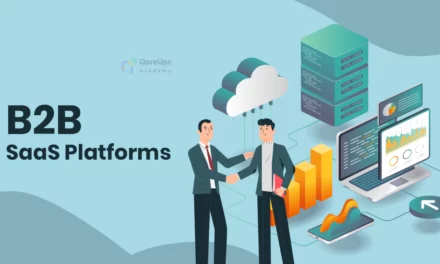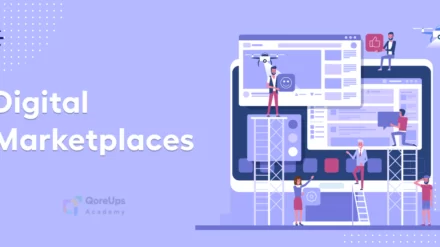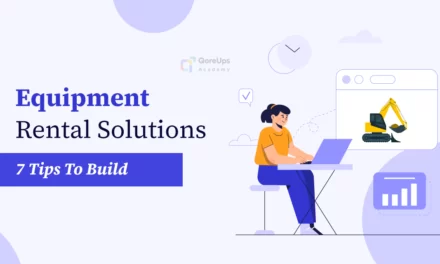Today running a successful marketplace business demands the right tools and technologies to streamline operations, enhance user experiences, and ensure scalability. One of the key decisions you’ll need to make is selecting the best SaaS marketplace software for your marketplace.
This decision can significantly impact your SaaS marketplace platform’s efficiency, security, and overall success. To help you make an informed choice, we’ve outlined five critical factors to consider when choosing the ideal SaaS marketplace software.
Scalability: Growing with Confidence
Scalability isn’t just a feature; it’s a necessity for any B2B SaaS marketplace business with growth ambitions.
As your marketplace business expands, your chosen SaaS marketplace software should seamlessly adapt to accommodate the increased workload.
Scalability ensures that your SaaS marketplace platform remains responsive and efficient, even during periods of rapid growth.
When evaluating B2B SaaS marketplace software providers, it’s essential to look for a flexible pricing model. Pay-as-you-grow options are particularly advantageous, enabling you to scale your software expenses in alignment with your revenue.
Factors To Consider
- User and Transaction Volume: Ensure the software can handle an increasing number of users and transactions as your business grows.
- Resource Allocation: Assess how the software allocates resources. Can you easily adjust resource allocation to accommodate growth?
- Pricing Flexibility: Does the B2B SaaS marketplace software provider offer flexible pricing models or subscription plans to match your scaling needs?
- Scalability Testing: Inquire about the provider’s scalability testing and performance during peak loads.
Real-World Scenario
Imagine your online SaaS marketplace platform experiencing a sudden surge in user registrations and sales during the holiday season.
With scalable SaaS marketplace solutions, your platform smoothly manages the increased traffic, ensuring a seamless user experience.
Without scalability, this sudden growth could lead to site crashes and lost revenue.
Customization and Integration: Tailoring to Your Needs
One size rarely fits all, especially in the world of online SaaS marketplace platforms. Each marketplace has its unique requirements and branding.
Customization options are essential to tailor your SaaS marketplace software to your specific workflows and user experiences.
Likewise, integration capabilities are paramount to ensure smooth interactions with other tools and platforms you rely on.
Factors To Consider
- Customization Options: Evaluate the extent to which you can customize the software to match your business’s unique needs.
- Third-party Integrations: How easily does the SaaS marketplace software integrate with external tools and services such as payment gateways, analytics, and marketing platforms?
- API Availability: Does the software provider offer robust APIs (Application Programming Interfaces) to facilitate custom integrations?
- Scalability of Integrations: Consider how well the software can handle multiple integrations as your business grows.
Real-World Scenario
Your B2B SaaS marketplace business has specific branding and workflow requirements that differ from off-the-shelf solutions.
Customizing your SaaS marketplace software allows you to align the platform precisely with your business’s identity and processes.
Additionally, seamless integration with your payment gateway and ensures a streamlined customer experience.
Security and Compliance: Safeguarding Trust
In an era of data breaches and cyber threats, trust is non-negotiable. Your online SaaS marketplace platform handles sensitive customer data and financial transactions, making data security and compliance a top priority.
When selecting a SaaS marketplace software, ensure that it adheres to industry-specific regulations and standards such as GDPR (General Data Protection Regulation) or HIPAA (Health Insurance Portability and Accountability Act).
Factors To Consider
- Data Encryption: Assess whether the software encrypts sensitive data both in transit and at rest.
- Access Controls: How robust are the access controls? Can you define who can access and modify sensitive data?
- Regulatory Compliance: Ensure the SaaS marketplace software complies with relevant industry regulations and standards.
- Security Updates: Inquire about the frequency and reliability of security updates and patches.
Real-World Scenario
Your SaaS enabled marketplace handles user data, including personal information and payment details.
To build and maintain trust with your customers, you must ensure their data is secure.
A data breach can not only lead to financial losses but also erode the trust your customers have in your platform.
User-Friendly Interface: Enhancing User Experience
User experience is a core aspect of your online marketplace SaaS success.
A user-friendly interface is not just about aesthetics; it’s about efficiency and engagement.
It reduces the learning curve for your team and ensures that your customers can effortlessly navigate and interact with your platform.
Factors To Consider
- Usability Testing: Does the SaaS marketplace software provider conduct usability testing to ensure a user-friendly interface?
- Mobile Responsiveness: Is the software’s interface optimized for mobile users?
- Accessibility: Ensure the interface complies with accessibility standards, allowing all users to access your marketplace.
- Feedback Mechanisms: Can users provide feedback on their experience, helping you continuously improve the interface?
Real-World Scenario
Your marketplace’s success relies on providing an excellent user experience.
An intuitive, user-friendly interface encourages users to explore your platform, engage with listings, and make purchases.
Positive user experiences lead to increased customer satisfaction and loyalty.
Support and Reliability: A Lifeline in Times of Need
Even the most reliable SaaS marketplace software can encounter issues from time to time. When technical hiccups occur, having responsive customer support can make all the difference.
Evaluate the level of support offered by your SaaS provider, including their response times, availability, and the quality of assistance.
Factors To Consider
- Support Availability: What are the hours of support availability? Does it align with your business’s operating hours?
- Response Time: Inquire about the typical response time for support requests.
- Support Channels: Is support available through multiple channels like email, chat, and phone?
- Service Level Agreements (SLAs): Does the provider offer SLAs that guarantee a certain level of service and support?
Real-World Scenario
Consider a situation where your online marketplace SaaS experiences technical issues during a high-traffic sales event.
With responsive customer support available, you can quickly address the problem, minimizing disruptions and ensuring a positive user experience.
In contrast, delayed or unavailable support can result in lost sales and frustrated users.
Along with the above 5 factors you have to consider bonus factors when selecting SaaS marketplace software.
Pricing and Total Cost of Ownership (TCO): Budgeting for Success
When choosing the right SaaS marketplace software, it’s crucial to understand the pricing structure comprehensively.
It’s not just about the initial subscription cost; you need to be aware of any hidden fees, overage charges, or subscription models that might apply.
Calculate the total cost of ownership (TCO) to gain a comprehensive view of the expenses involved.
This should include implementation costs, training, ongoing maintenance, and any potential scalability costs as your business grows.
Factors To Consider
- Subscription Tiers: Does the software provider offer different subscription tiers with varying features and pricing?
- Implementation Costs: What are the upfront costs associated with implementing the software?
- Ongoing Maintenance: Consider the cost of maintaining the software, including updates and support.
- Scalability Costs: How does the software’s pricing model account for scaling your usage?
Real-World Scenario
Understanding the total cost of ownership is crucial for effective budgeting and financial planning. It helps you avoid unexpected financial surprises and ensures that you can allocate resources appropriately for both the short and long term.
User Feedback and Reviews: Learning from Peers
One of the most valuable sources of insight is the feedback and reviews of other marketplace businesses that have used the same SaaS marketplace software.
Real-world experiences can provide deep, nuanced insights into the strengths and weaknesses of a given solution.
Factors To Consider
- User Reviews: Analyze user reviews and testimonials to gauge satisfaction levels.
- Consistency in Feedback: Look for patterns in user feedback to identify recurring strengths and weaknesses.
- Similar Marketplace Business Models: Seek feedback from businesses with similar marketplace models to yours.
- Addressing Concerns: Assess whether the software provider actively addresses user concerns and issues.
Real-World Scenario
Before making a decision, you can gain insights from businesses with similar needs and challenges. Their experiences and feedback can help you make an informed decision and avoid potential pitfalls that others have encountered.
Future-Proofing: Staying Ahead of the Curve
The marketplace industry is in a constant state of evolution. To stay competitive and relevant, your software should adapt to emerging trends and technologies. Evaluate the SaaS provider’s roadmap for future updates and enhancements.
Factors To Consider
- Future Features: What new features and capabilities are on the provider’s roadmap?
- Technological Adaptability: Assess how the software can adapt to emerging technologies and industry trends.
- Long-Term Partnership: Consider the provider’s commitment to long-term partnerships and customer success.
- Scalable Roadmap: Does the provider’s roadmap align with your business’s future growth plans?
Real-World Scenario
Imagine your marketplace SaaS solution platform needs to adopt blockchain technology to enhance trust and transparency in transactions. A future-proof software solution that can readily integrate with AI technology ensures that your SaaS enabled marketplace remains competitive and can meet the evolving demands of your industry.
Conclusion
Selecting the right SaaS marketplace software for your marketplace business is a decision that should not be taken lightly.
These eight factors—scalability, customization and integration, security and compliance, user-friendly interface, support and reliability, pricing and TCO, user feedback, and future-proofing—are pivotal in determining the software that aligns with your unique business needs and objectives.
By carefully evaluating each of these factors, you can make an informed choice that positively impacts your SaaS enabled marketplace’s efficiency, security, and potential for growth.
Your software choice can be a powerful ally in achieving marketplace success.






